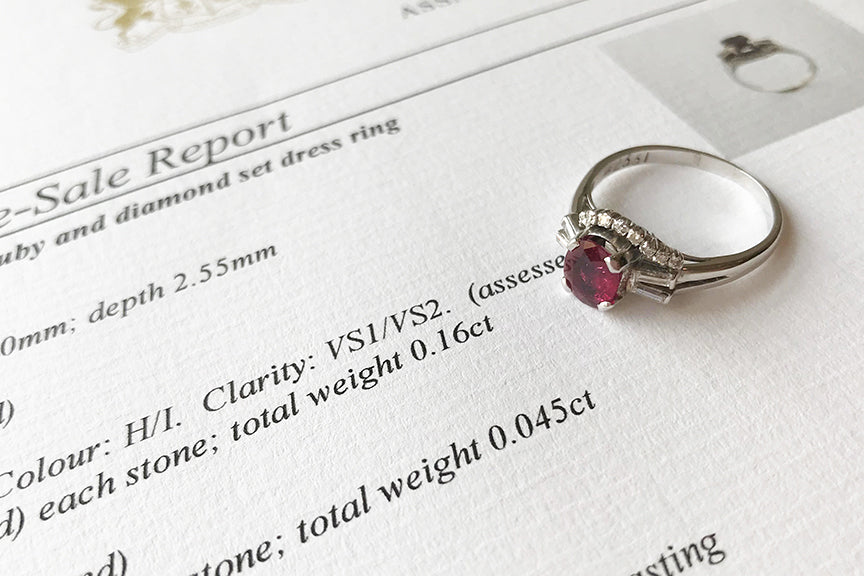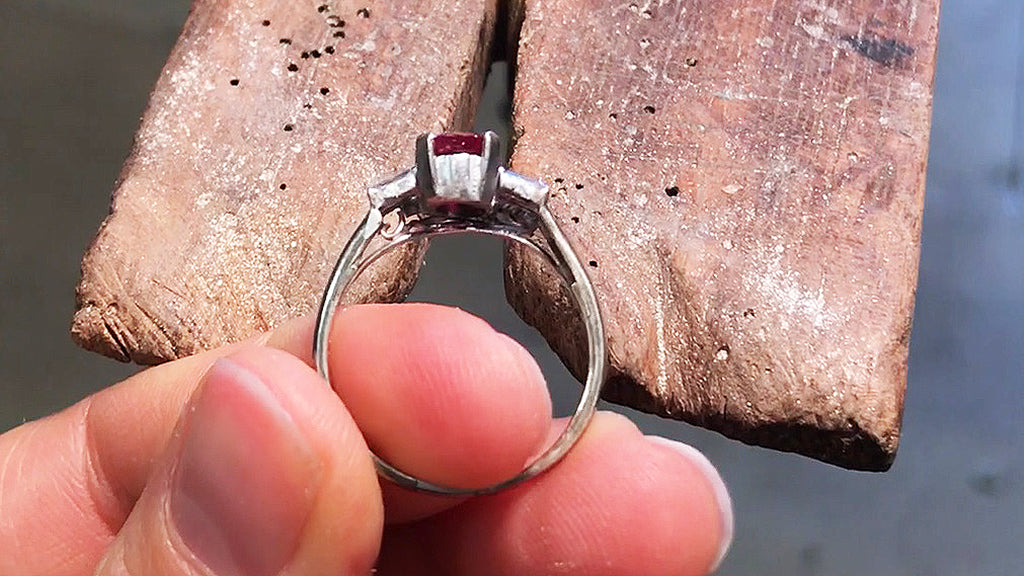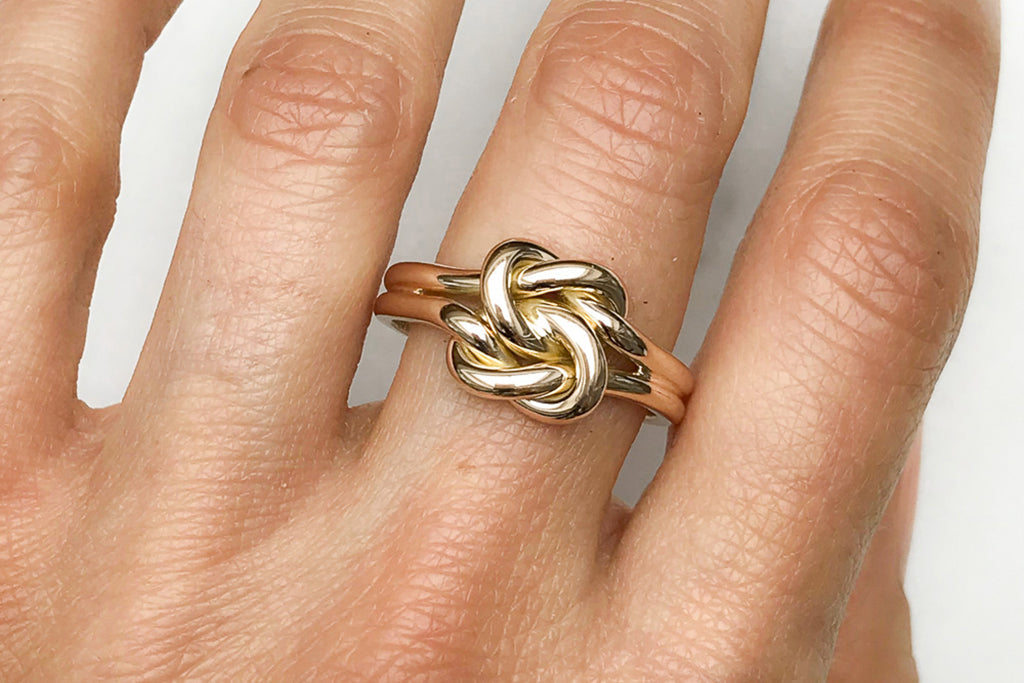
Vintage Engagement Rings: The Most Common Problems
Though staunch in their symbolism of lifelong commitment, sadly engagement rings aren’t indestructible; whether manufactured 250 years ago or yesterday. Worn every day and exposed constantly to the elements, your engagement ring is perhaps one of the most vulnerable pieces of jewellery you’ll ever own.
Luckily, every jewel available on our website has undergone a rigorous process of checking, cleaning, polishing and, where necessary, repairing. This ensures that yours is in tip top condition by the time it reaches your hand. From then onwards, basic day-to-day maintenance is simple and should grant you years of enjoyment from your vintage ring.
However, sometimes light accidental damage just can’t be helped. This blog post is here to explore some of the most common vintage engagement ring glitches and what can be done to fix them.
ANTIQUE RINGS: BROKEN CLAWS
What to do if your claw setting breaks

Many an antique ring is characterised by the claw setting; a ‘basket’ of metal prongs that hold the centre stone firmly in place. Though crucial in their role, these claws are simply delicate slivers of metal, and they’re not unsusceptible to breaking from time to time.
Seeing a claw that’s bent out of shape is not uncommon; nor is it rare to see that one’s snapped clean off. One of the most common causes for these ailments is accidental snagging on hair, clothes or shower sponges.
Sometimes, however, a claw simply gives up the ghost because of gradual degradation; general use and skin acidity causing the metal to wear away over time until it’s just too thin to fulfil its role.
Often, diagnosing a broken prong is as simple as spotting it in passing. Sometimes, however, a claw flaw isn’t immediately apparent. This is why we advise keeping a close eye on your setting, taking it to be inspected by a professional on a bi-annual basis as well as checking it yourself once a week. On gently tapping or shaking the band, listen out carefully to ensure that you can’t hear a rattling sound indicating the gemstone is loose. It’s also worth running your fingers gently over the setting, feeling out for any claws that are abnormally raised; a problem that also presents itself by catching on things.
Fortunately, mending a faulty claw tends to be a simple job. Most of the time, it’s a case of re-tipping, wherein a little metal is added to the top of the claw with the help of a laser machine, offering just enough newfound support to hold the gemstone in place but not contrasting too obviously with the existing claws. Other times, we might decide to replace the claw entirely; though this is a slightly more substantial job and carries the potential to change the appearance of the ring slightly.
Depending on the complexity of the work, the repair fee usually falls somewhere in the region of £80 - £250.
ANTIQUE RINGS: SCUFFED METAL
What to do if your engagement ring is scratched

All engagement rings start showing some kind of wear and tear after a little while. Some scratching is inevitable, but the longevity of your vintage jewel is best ensured with careful handling. This means removing it during any activity that might leave it vulnerable; be it exercising, playing sport, lifting heavy objects, gardening or housework. Try to avoid contact with hard or abrasive surfaces (think car keys, door handles or scrubbing cloths!) and harsh chemicals that might react with the metal.
If you’d really like to give your vintage ring some TLC we’re happy to remove any light scratches with a gentle buff and polish; a service that we usually charge around £50 for. We don’t recommend doing this too often, however, as it’s a process that lifts away a little metal every time.
If your vintage ring is adorned with delicate details like engraving or milgrain beading, we’d encourage you to swerve re-polishing altogether, instead embracing your imperfections as an inherent aspect of your ring’s journey. Some people grow to love their scuffs, marks and scratches for the unique stories they tell.
ANTIQUE RINGS: METAL COLOUR CHANGE
What to do if your engagement ring fades

If your vintage ring is white gold, there are a number of reasons that it might become faded or discoloured over time. White gold is generally an alloy consisting of 75% pure yellow gold and 25% other metals such as palladium - the latter included to give the yellow metal its silvery-white hue. However, even with the presence of these white metals, white gold still shows a slightly yellow tinge. For this reason, it’s usually plated with white rhodium to mask the yellow hue. All of our vintage white gold rings are treated to a good polish and plate before they land in our online shop.
Unfortunately, however, rhodium plating wears away slowly over time, once again revealing the slightly yellow metal underneath. The rate at which rhodium plating wears is completely contextual, depending on all sorts of factors, from jewellery care to day-to-day activities and even the unique acidity of your skin!
We recommend having your white gold ring re-plated with rhodium once every couple of years to keep it looking fresh. This is a quick and easy process and generally costs around £60.
STONE DAMAGE
What to do if you crack, chip or scratch your gem

The diamond is the hardest known natural substance on earth, technically only scratched by another diamond. However, a weighty knock at an unfortunate angle is sometimes enough to cause damage, with small chips not at all uncommon for diamond girdles. Meanwhile, coloured gemstones like rubies, sapphires and emeralds - common features of vintage engagement rings - score a little lower than diamonds on the Hardness Scale, so aren’t immune to abrasion either. Scrapes and chips are particularly common of gemstones that have lived long lives.
If you notice any small, superficial scratches in the surface of your gemstone, a skilful lapidary might be able to give it a gentle polish to lift them out. If your vintage sparkler is heavily chipped or worn down, a lapidary – or stone-cutter – might be able to restore it with some fresh facets.
However, the ability to repair an injured gem is all dependent on the extent and nature of the damage. Until we’ve released your stone from its setting and given it a thorough once-over, it’s tricky to prescribe a treatment or confirm a repair quote.
Some people are charmed by the battle wounds their vintage engagement ring bears, not phased by the odd characterful blemish. Others prefer to swap their vintage gem out entirely for a new one. Whichever direction your instincts nudge you in, we’re happy to advise.
ANTIQUE RINGS: DIRT BUILD-UP
Why it's important to keep your engagement ring clean

Have you looked down at your vintage engagement ring, only to notice that its gemstone is perhaps not glistening as bewitchingly as before? Is your metal band gleaming a little less than the day you said ‘Yes’? A gradual build-up of dirt and cosmetic products can seriously dull a vintage engagement ring’s sparkle, which is why we recommend giving yours a regular clean.
Bathing your ring in a solution of warm water and washing-up liquid before giving it a gentle brush with a child’s toothbrush should do the trick. Ideally, you should do this once every week or two.
Remember that your vintage engagement ring is a delicate soul, so we highly recommend avoiding ultrasonic cleaning machines or any other heavy duty techniques if you don’t feel 100% confident about the resilience of your gemstones. Opals and pearls, in particular, should never undergo any industrial processes.


